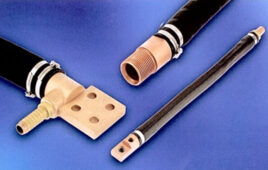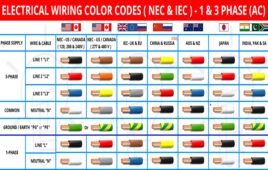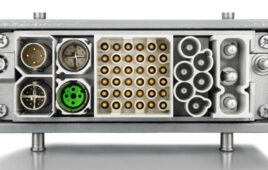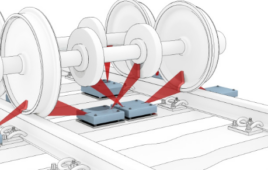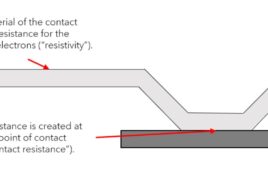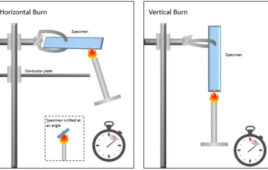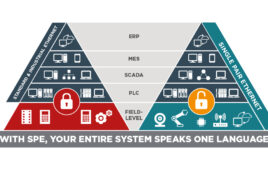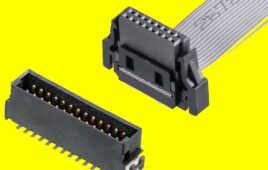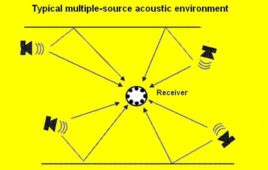EVSEs provide power to charge EV batteries at Level 1 and Level 2 voltage ratings. Electric vehicle (EV) owners rely on electric vehicle supply equipment (EVSE) to charge their batteries efficiently. Often referred to as charging stations or docks, EVSEs provide a reliable and safe connection between EVs, the electric grid, and other energy sources. […]
What plating options are available for high-power connectors?
Plating options are numerous and tend to fall into four categories: noble metals, passive metals, alloys, and dispersions. The first three categories are well established, while dispersions are just beginning to appear in response to the need for high-power connectivity in electric vehicle (EV) charging and similar applications. This FAQ starts with a brief review […]
Where are liquid-cooled industrial connectors used?
Liquid-cooled connectors are used in high-current, high-power industrial applications like electrochemical processes, welding, induction furnaces, electric arc furnaces, electrothermic processes, and electromagnets. This FAQ looks at various liquid-cooled cable and connector structures for carrying up to 60 kA. Two keys to optimizing the performance of liquid-cooled connectors and cables are minimizing the resistance in the […]
What standards apply to heavy-duty and industrial connectors?
There are numerous standards for heavy-duty connectors (HDCs) and general industrial connectors. An HDC is defined as a rectangular connector that can handle power, data, and signal pins in a single housing and is designed for use in challenging industrial and transportation environments. They are a subset of general industrial connectors. This FAQ does not […]
What’s a heavy-duty industrial connector?
A heavy-duty industrial connector (HDC) is a rectangular connector that can handle power, data, and signal pins in a single housing and operate in harsh environments. While there are also standardized circular industrial connectors, they are not classified as HDCs. HDCs are found in robotics, automation, machine control, power conversion, and motion control applications. This […]
Select and integrate sensors into IoT devices
Get an understanding of how to select sensors and microcontrollers for your IoT product, with an emphasis on circuit design to optimize performance.
FAQ on railroad hot-box-temperature sensing, part 1
Modern electronics should be able to easily solve a temperature-sensing challenge, but the harsh real-world complexities make it a difficult proposition. Freight railroads are a very important part of the logistics infrastructure around the world for transporting raw materials as well as finished goods. They are a major constituent of intermodal transportation along with trucks, […]
How to improve contact reliability and security in HVAC/harsh environments
Contact security and reliability are important considerations when designing heating ventilation/air conditioning (HVAC) systems and other equipment for use in harsh environments, like outdoors or in industrial facilities. Well-established standards like RAST connectors provide a good alternative, but some applications demand more. Challenges include environmental sealing, contact retention, position optimization, and locking power connectors together […]
What are the key tests for HVAC/harsh environment connectors?
Connectors are complex assemblies whose performance is based on interactions of electrical, mechanical, environmental, and materials factors. Extensive testing is required to ensure proper performance, and numerous industry standards have been developed for that purpose. This FAQ reviews 13 tests across three key performance indicators for connectors, including electrical, mechanical, and environmental considerations for connectors […]
What are the top five performance needs for HVAC/harsh environment connectors?
Amid a plethora of performance requirements for connectors used in heating ventilation and air conditioning (HVAC) systems and other harsh environments, five stand out as especially important — ingress protection against dust and moisture (IP rating), extreme temperature operation, balancing mating/unmating forces and contact resistance, retention force and locking mechanisms for robust operation, and safety. […]
What’s the difference between needle flame and glow wire testing?
Needle flame and glow wire testing are two approaches to determining the flame-retardant performance of materials like various plastics and the electronic devices that incorporate those materials. Needle flame tests are defined in IEC 60695-2-2, while glow wire testing is defined in IEC 60335 and IEC 60695. UL94 is another material burning test and can […]
What are RAST connectors?
RAST connectors include signal and power designs based on insulation displacement technology. The original specification included a maximum of 12 contacts, but RAST connectors are currently available with 20 or more contacts. They were developed for consumer white goods and have been adopted by various applications, including automotive systems. The RAST connector system was designed […]
The future of better M2M communications requires optimizing interoperability
By Priyank Kishor, global product management leader, TE Connectivity As Industry 4.0 advances manufacturing and production capabilities, factories can better integrate crucial processes, drive greater efficiencies, and access data and insights to improve operations. However, one significant challenge continues to stand in the way of optimizing machine-to-machine (M2M) communications: seamless interoperability and integration. Interoperability in […]
What are the subtleties of using accelerometers as vibration sensors?
Accelerometers are deceptively simple-looking devices but are complex electromechanical systems. But there are numerous mechanical, environmental, electronic, and application-related factors to consider when using accelerometers. This FAQ reviews several of the subtleties that need to be considered when using accelerometers as vibration sensors and closes with a look at the ISO/IEC/IEEE 21451-4:2010 standard for Transducer […]
When to use sound pressure and when to use sound intensity measurements
Sound pressure, sound intensity, and sound power are three different ways to quantify sound. This FAQ begins by defining each one, looks at various types of measurement techniques that can be used to quantify them, presents a range of international testing standards for measuring sound, looks at instruments used for measuring sound pressure and intensity, […]
What’s special about connectors in quantum computers?
Quantum computers are expected to solve some of the world’s most complex problems. Fabricating interconnects is one of the most complex problems when building quantum computers. Quantum computers need connectors that can withstand cryogenic temperatures, with non-magnetic construction, that operate at microwave frequencies with low losses to reduce heating and improve data transfer. High-density hermetically […]
Rotary slip ring connectors — what are they used for?
Rotary slip ring connectors are important components in various applications like multi-axis robots in industry 4.0, wind turbines for sustainable green energy, machine tools, medical systems, and more. This FAQ considers how slip ring connectors differ from commutators, and looks at how mercury-wetted, pancake, and wireless slip ring connectors work. Their capabilities and reviews applications […]
Where are liquid cooled connectors and connectors for liquid cooling used in EVs?
Liquid cooled connectors are used for carrying high power levels like those found in extreme fast charging (XFC) EV chargers. Connectors for liquid cooling are more common and used for cooling EV battery packs, cooling XFC EV charging stations, and other thermally demanding applications. This FAQ will review the performance and use cases for liquid […]
How are terahertz connectors different?
Terahertz (THz) systems represent one of the next frontiers in electronics. THz applications are expected to include automotive advanced driver assistance systems (ADAS) for autonomous vehicles, next-generation telephony like 5G and 6G, augmented and virtual reality (AR & VR) technologies for the metaverse, and more. There will be numerous challenges to overcome in the development […]
How can connector sustainability be improved?
Before it became fashionable, connector makers were at the forefront of sustainability. It started with replacing cadmium plating to meet RoHS requirements and soon expanded to using plastic regrinds and bio-based plastics instead of 100% new plastics for connector bodies. Connector makers have more recently embraced new, more sustainable materials for high-performance contacts. This FAQ […]
Interconnections for EV powertrain systems
Space constraints that characterize electric vehicle systems put special demands on connectors that must handle high power and rising data rates. Giorgio Potenza • Harwin There are six main systems directly associated with an electric vehicle (EV) powertrain. They consist of the onboard charger (OBC), the battery pack, the battery management system (BMS) that monitors […]
Sifting clear audio from background noise
Powerful statistical techniques can discern a desired audio signal from a jumble of inputs. Dave Betts • AudioTelligence Most of us live and work in the midst of noise. We have become used to contending with the sounds of other people talking, music playing, the TV blaring, traffic roaring… Our brains are pretty amazing at…
Smoke detectors and alarms, Part 4
The low-cost, reliable, ubiquitous smoke detector is an example of complex physics and optics made real by semiconductors. Technology is always improving and adding features to existing products, and that’s true of smoke detectors and alarms. At the same time, the “protection” world is very cautious about adding features and frills which may detract, impede, […]
Smoke detectors and alarms, Part 3
The low-cost, reliable, ubiquitous smoke detector is an example of complex physics and optics made real by semiconductors. Given the huge market for smoke alarms of both types – easily tens of millions of units per year for new and replacement/upgrade units – it’s no surprise that many IC vendors offer components and reference designs […]
Smoke detectors and alarms, Part 2
The low-cost, reliable, ubiquitous smoke detector is an example of complex physics and optics made real by semiconductors. This part looks at the two widely used approaches to smoke detection. Q: How do smoke detectors actually detect smoke? A: There are two basic and very different approaches, one based on photoelectric principles and the other […]



